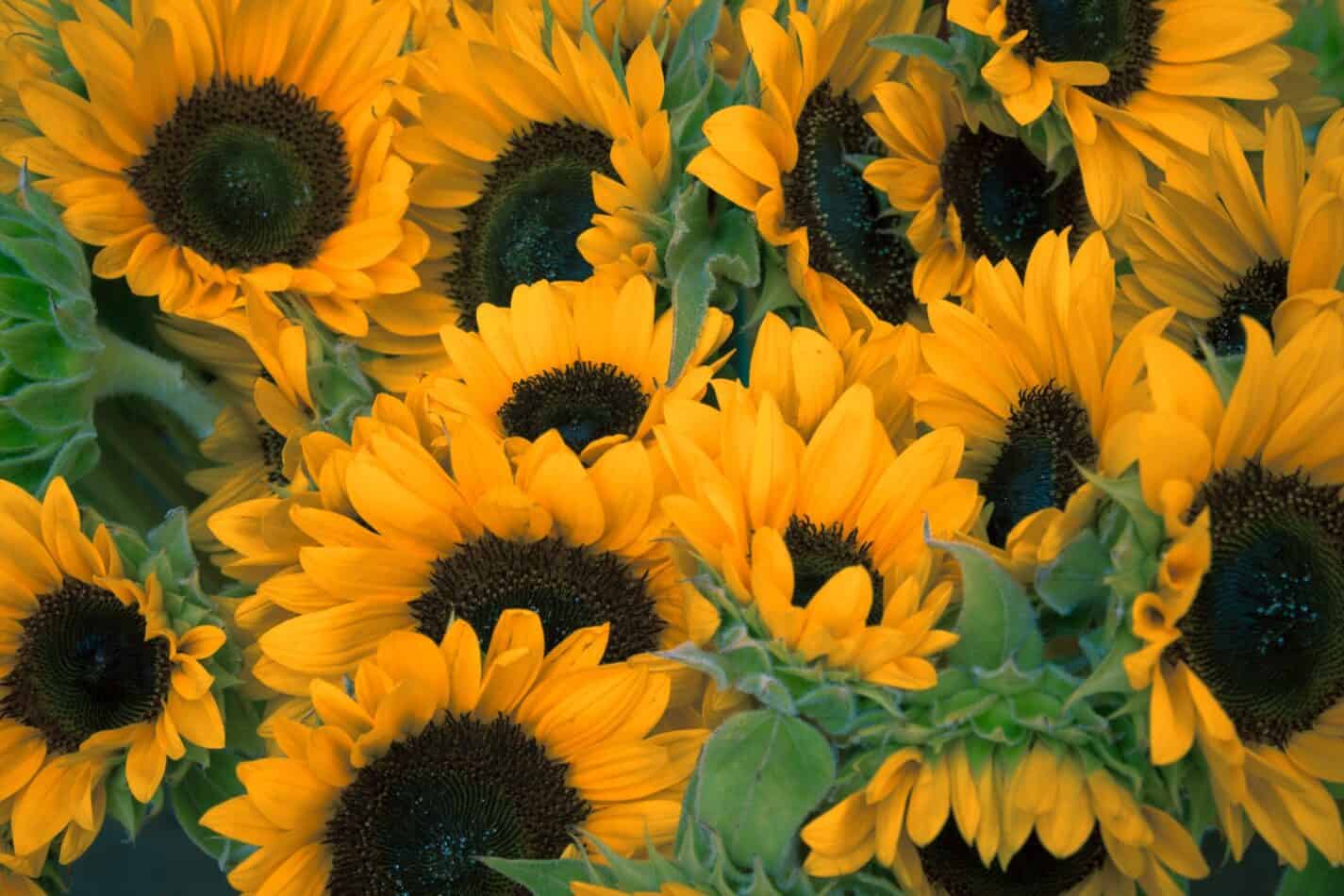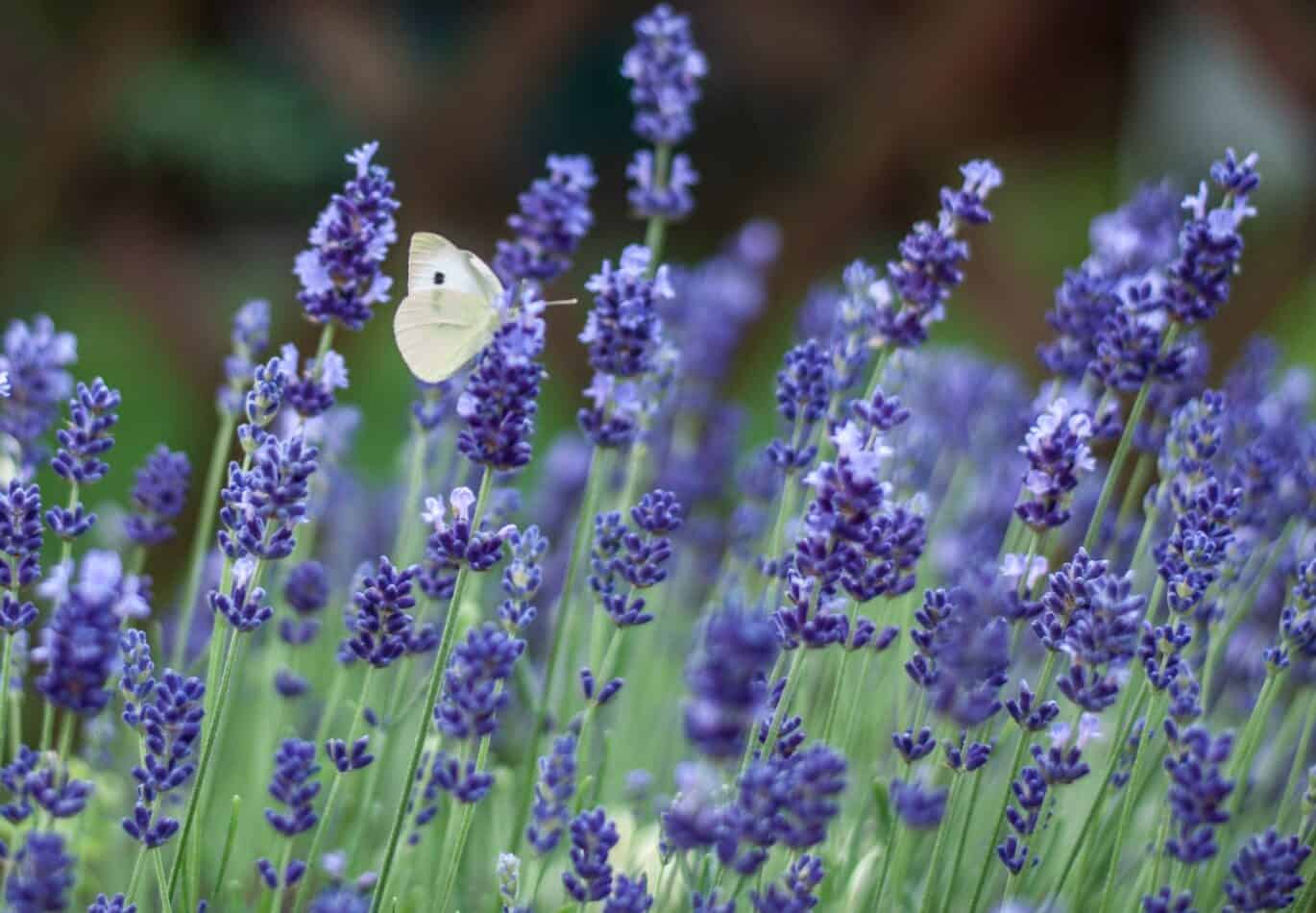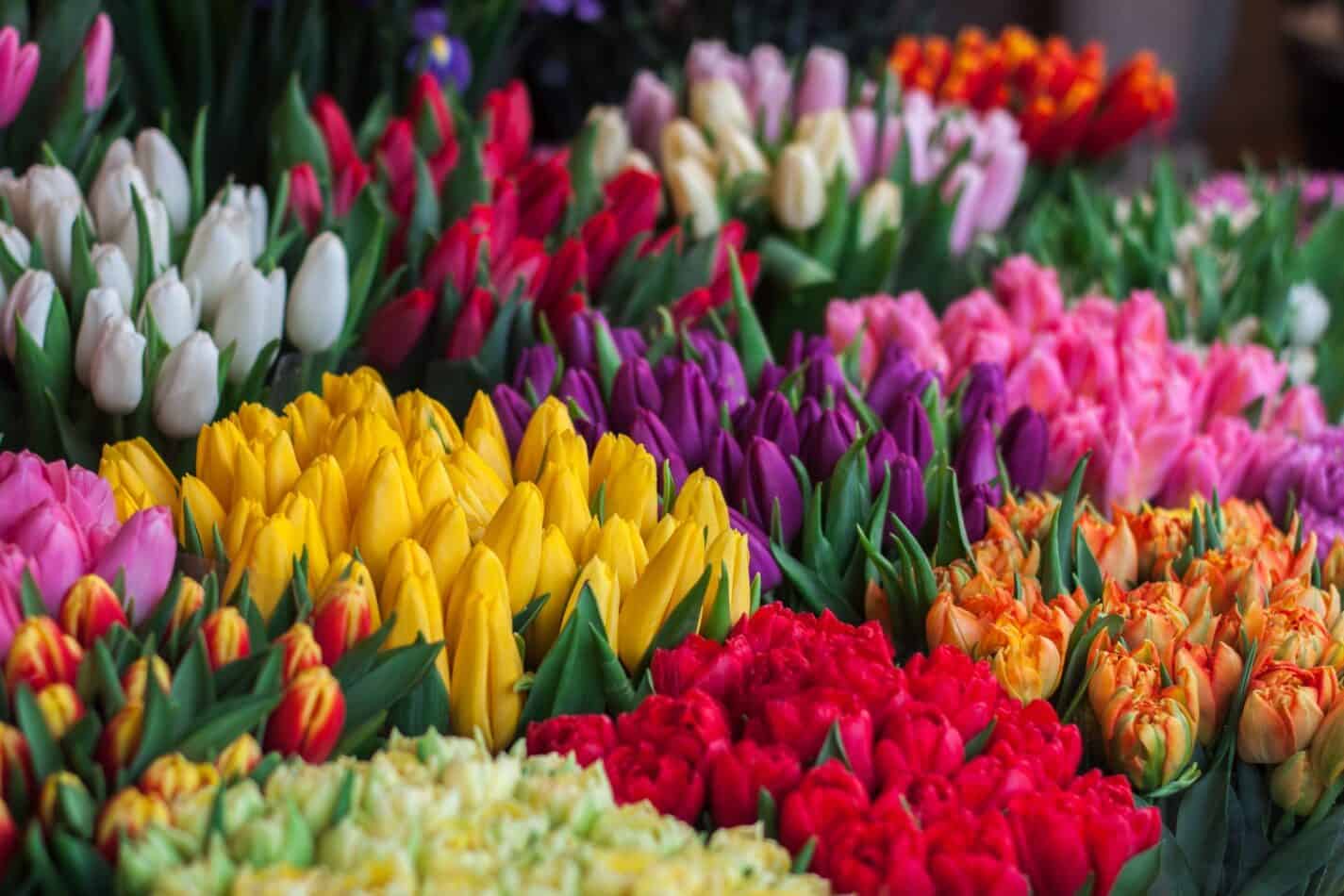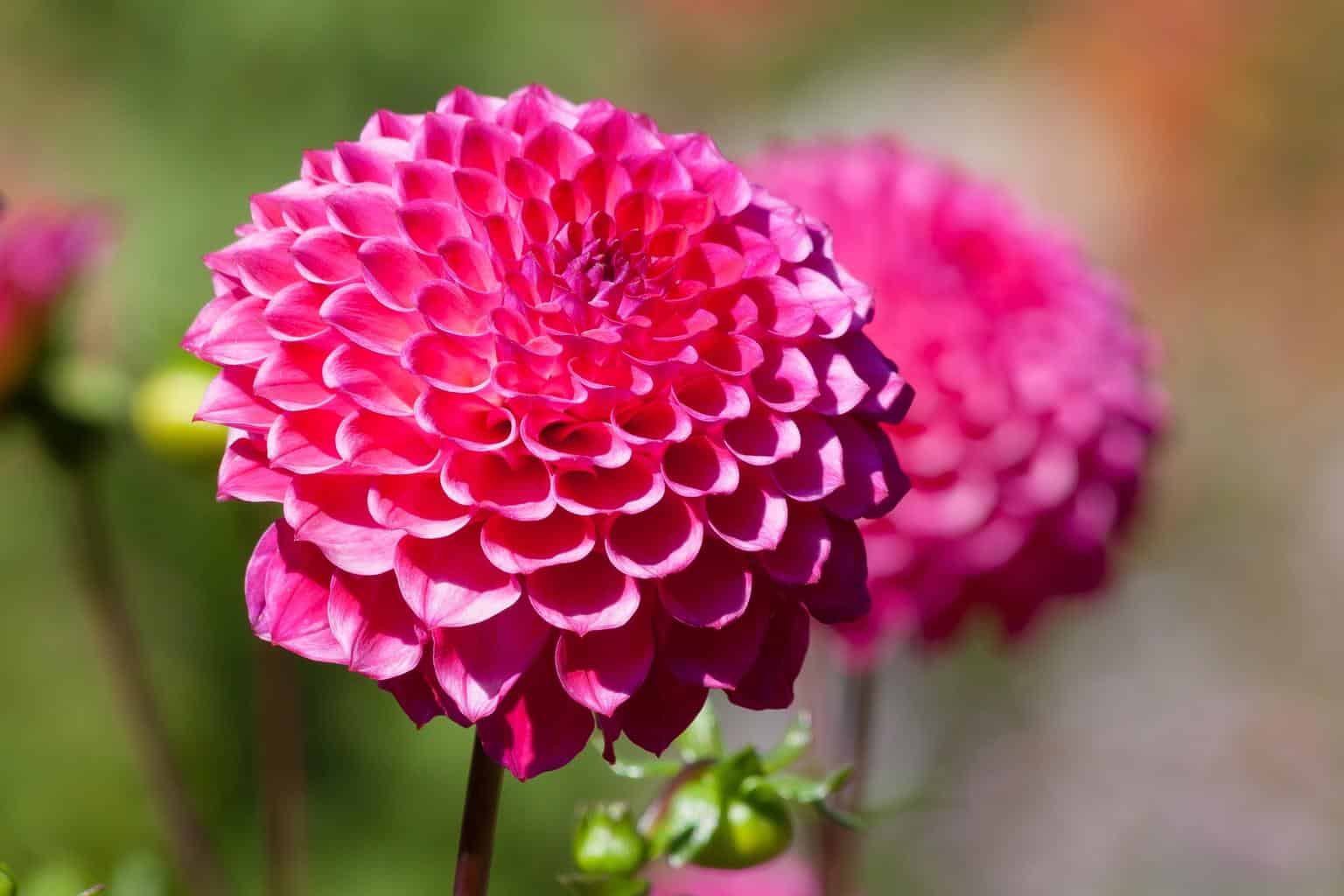Have you ever wondered how to grow sunflowers in 3 easy steps? Van Gogh painted this vibrant flower because it communicates ‘gratitude.’ The painter hung two paintings depicting sunflowers in the room of Paul Gauguin when he came to live with him in the Yellow House. So what makes these bright blooms so fascinating that even artists are mesmerized by them?
The big, cheerful blooms of the sunflower plants follow the sun throughout the day, provide food and resting places for birds, and provide a nutritious food source, too, thanks to their edible seeds.
Sunflower heights range from dwarf varieties to giant sunflowers, and the bloom colors range from yellow, red, to tri-color. These eye-catching flowers will bloom for several months during the summer and make long-lasting cut flowers. What not to like when it comes to this exquisite flower?
Discover How To Grow Sunflowers in 3 Easy Steps.

Photo by Todd Kent
Tips for Sunflowers
Sunflowers are one of the easiest crops to grow from seed. Preparing the soil and choosing the best spot for them is just the job.
- Find a sunny spot that’s just right
These cheery blooms are not just lovely flowers in the garden; they also provide food for honeybees! In addition to being beautiful flowers, they’re also useful for pollinating crops such as tomatoes, cucumbers, peppers, eggplant, and squash blossoms. You can start seeds indoors four weeks before the last frost date. Plant out after the soil reaches 60 degrees F.
- Prepare the soil for planting
Rich, well-draining soils are essential. Mix in 2 to 3 inches of compost if your soils are heavy. Add fertilizers to soils with a complete nutrient before you plant.
You should add fertilizer to your garden beds’ top 6 to 8 inches.
These yellow blooms prefer slightly acidic soil (6.0 and 6.5 are ideal). You should be able to test the soil’s acidity with a home testing kit.
- Choose the right time to plant
When choosing when to plant sunflower seeds, you must wait until the garden soil is nice and warm. Sunflower seeds germinate when the earth is about 70 to 85 degrees Fahrenheit. The best times to plant sunflower seeds are just before the earth gets to this temperature. Look for a soil temperature of about 60 to 70 degrees. These temperatures will occur 3 to 4 weeks after the last fall freeze for most areas. If you plant sunflower seeds indoors, you will have an advantage when outside reaches the right temperature. Space seeds at least 3 inches apart and put in pots around the same time they reach the proper temperature.
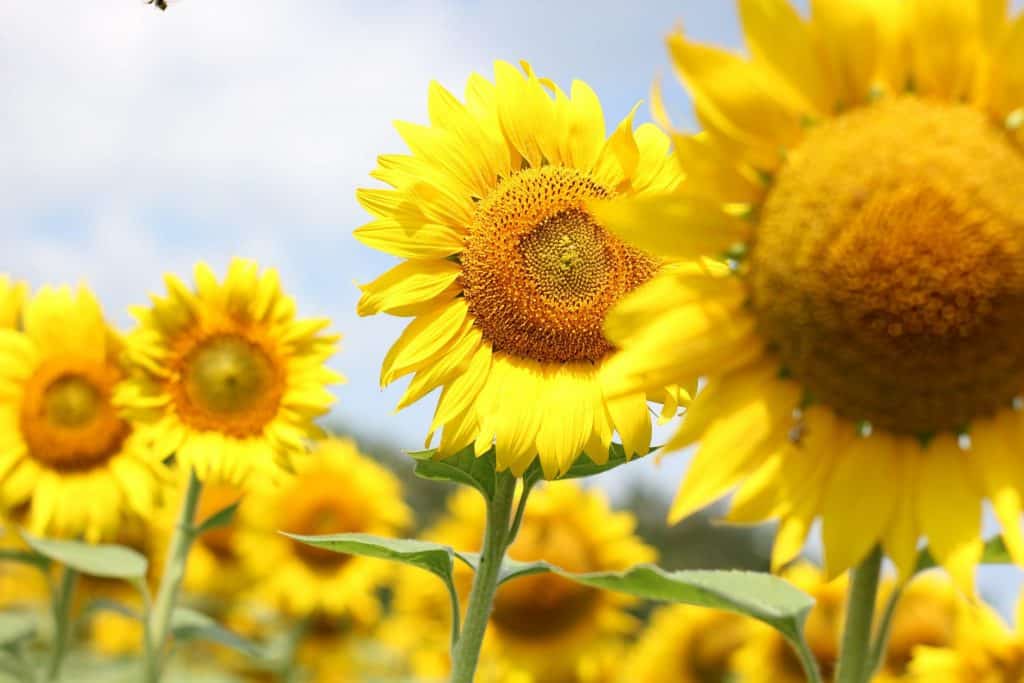
- Start planting seeds
Sunflowers are grown from seed, not cuttings. They can be planted directly into the ground or started indoors under lights. Seed heads germinate best if kept warm (about 70 degrees F) until they’ve developed two sets of leaves. Once plants reach about 4 inches tall, they can be transplanted outdoors. Sunflowers do best in full sunlight, so make sure they get plenty of light during the day. Water regularly, especially after hot weather. Keep weeds down around them.
Sunflowers require space.
For sunflower seedlings, plant them at least three inches apart in each peat pot.
Soil-free planting medium gives you the best drainage. Inside germination normally takes six to ten days. You can enjoy continual blooming throughout the season by sowing again every two to four weeks.
By planting successive crops of sunflower seeds, you’ll be able to enjoy beautiful sunflowers throughout the summer months and have continuous blooms.
- Soil Moist and Soil Type
Sunflowers need lots of water to grow because they contain many natural oils. Water the soil after you plant seeds. Water the plants frequently and lightly until they sprout. To start seeds indoors, cover them with clear plastic wrap to prevent evaporation. As soon as the seeds start to sprout, remove the plastic wrap.
- Thinning sunflower seedlings
When the sunflower seeds start growing their first true leaves, you need to thin them out, so they’re spaced at least 18 inches apart.
Sunflower seeds don’t grow well if they’re planted too close together. If you want to grow them successfully, space them at least 6 inches apart.
It’s possible to space out your plantings closer together if you want them to look better aesthetically, but crowded plantings will produce smaller flowers.
It would help if you planted one sunflowers seedling per cup. Choose the strongest sunflower and pinch back the rest of the plants.
How To Grow Sunflowers in 3 Easy Steps
1. Planting Location
As their name indicates, cheerful sunflowers love the sun; direct sunlight is all they need! So, choose a planting location that is in full sun. These pretty yellow flowers need 6 to 8 hours of sunlight per day.
They are not picky about soil conditions and will grow anywhere except in heavy clay or soil that remains soggy.
A location that provides shelter from wind will be needed when growing the tallest varieties outdoors. Varieties of sunflowers like the American Giant or Skyscraper can start at 1 foot tall and reach 12-15 feet tall and be top-heavy, and high winds can easily cause them to topple over and break. A sheltered location along a fence or a structure will protect them from high winds.

2. Prepare Soil
The second step requires a bit of preparation. Sunflowers are very heavy feeders and need to be planted in soil rich in nutrients. Place 4-inches of compost on top of the soil and work it down to 8-inches. This will keep the soil from compacting and provide plenty nutrition for the fast-growing plants throughout summer.
You can add your favorite type of slow-release plant food to the soil at this time too.
When growing sunflowers in a container, select potting soil that contains compost and slow-release fertilizer.
3. Use the right technique
To plant or not to plant? This is the question.
Wait until all danger of frost has passed and the soil has warmed to 55 degrees F or warmer before planting seeds. Place seeds one 1/2 inches deep and 6-inches apart in prepared soil (in-ground or in a container). Cover seeds with soil, gently pat down, then water thoroughly.
Plant seeds every two weeks from the last spring frost until late spring to prolong the bloom time.
After the seeds germinate and the plants are 6-inches tall thin them out according to their mature size. Varieties that grow lateral branches will need 2-3 feet to spread out, and tall-growing varieties won’t need that much space and can be thinned out to 1-foot apart.
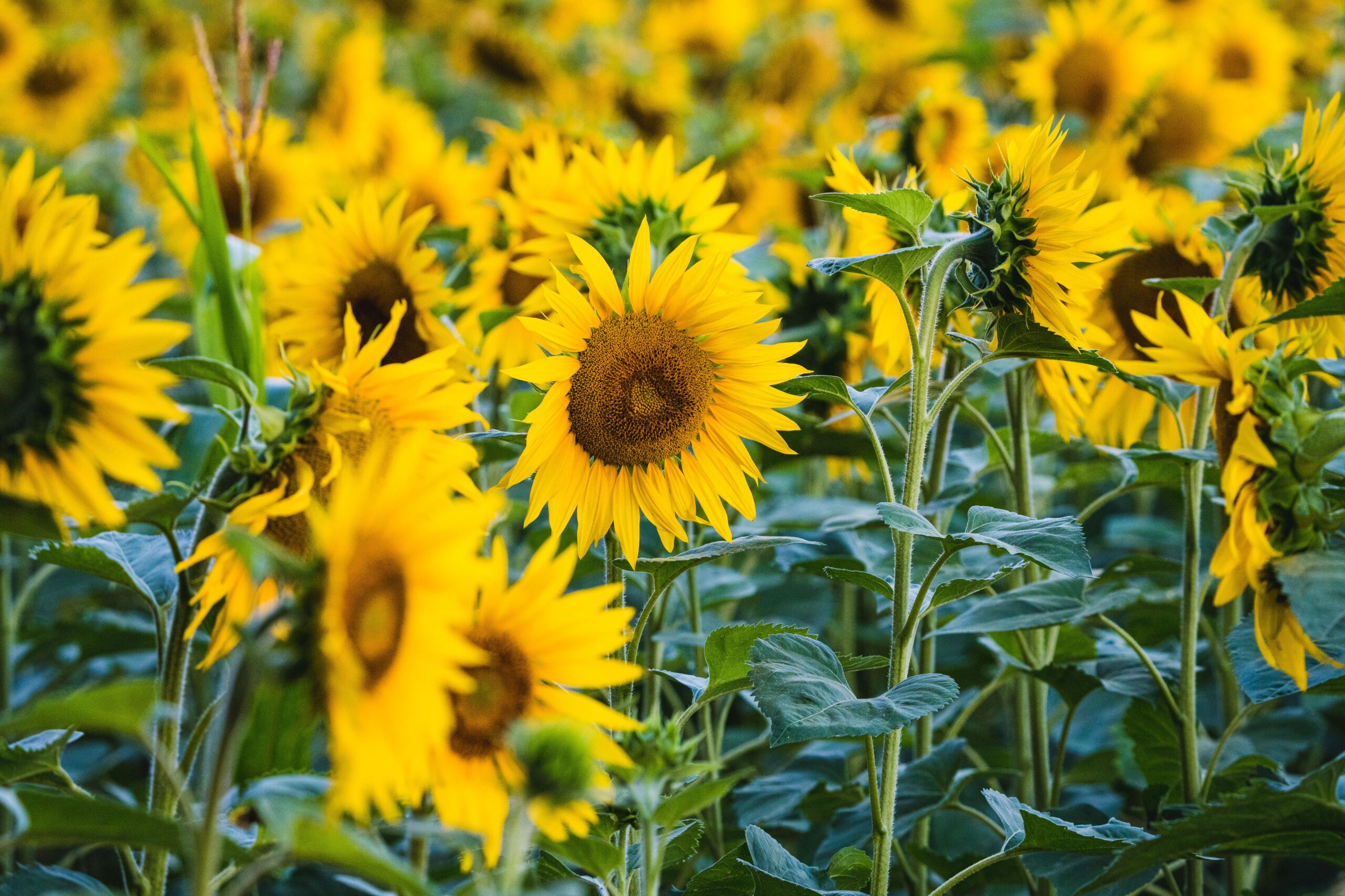
Photo by Guillaume de Germain
Caring for your Sunflowers
You can take a few steps to care for your sunflowers during the “infancy” stage. From birds to snails, many animals consider sunflowers a delicacy; we list the issues and how to solve the problem!
- Birds love sunflower seeds and will scratch in the soil and dig them up for a quick meal. If birds go after the freshly planted seeds, spread bird netting on top of the soil to prevent the birds from digging them up.
- Snails and slugs enjoy the taste of tender sunflower single stems and will devour them as soon as the plants emerge. Apply a 2-inch layer of rough mulch, like tree bark, around the base of the sunflowers to prevent snails and slugs from reaching the plants. Soft-bodied garden pests will not crawl over rough mulch since it will create cuts on their underside and cause them to dehydrate and die.
Water and flower positioning can also become a problem if not addressed immediately. Don’t forget to:
- Water only during times of drought and then only once a week. Water deeply encourages deep root growth to help the tall plants remain securely anchored in the well-drained soil.
- Stake and tie sunflowers if needed to keep them upright.
When the flower petals fall off, and the backs of the flowerheads turn dark, harvest the flower heads. They make excellent cut flowers. Sunflower seeds can be eaten or used as a bird or chicken food. To prevent birds and squirrels from eating all the seeds before they have dried, place a piece of cheesecloth over the flowerheads and secure it with a rubber band.
What we love from Amazon this week
Buy these wonderful flowers directly from Amazon:


